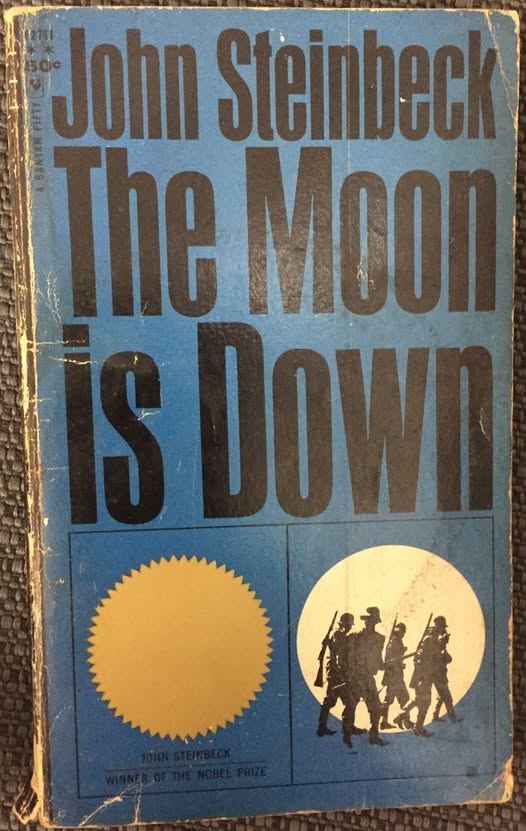A quiet occupation unfolds in a snowy Northern European town not with blaring tanks and obvious brutality, but with the silent, creeping horror of normalized oppression. The Moon Is Down by John Steinbeck is a masterclass in psychological warfare, where the real battle isn’t for territory, but for the human spirit. Written during World War II (published in 1942), this slim, explosive novel distills Steinbeck’s belief that no occupation can succeed when the occupied refuse to surrender their minds.
Steinbeck strips war to its essence: a coal-mining town’s sudden capture by an unnamed invading force becomes a microcosm of all occupations. The invaders led by the conflicted Colonel Lanser, a veteran who knows the cost of war arrive with polished boots and bureaucratic efficiency. They issue polite decrees, host civilized dinners with the deposed Mayor Orden, and insist this is all for everyone’s benefit. But when the first local boy is executed for resistance, the illusion shatters. What follows isn’t heroic rebellion, but something more profound: the slow, stubborn erosion of the occupiers’ morale as they face a weapon they can’t confiscate the townspeople’s collective will.
The genius lies in what Steinbeck doesn’t show. There are no battle scenes, only chilling aftermaths: a soldier found dead in the snow, a mine sabotaged with quiet precision, the growing terror of young occupiers who realize they’re surrounded by enemies wearing civilian clothes. The real tension simmers in conversations Mayor Orden’s dignified defiance (“You can’t break men the way you break machines”), or the moment a local woman serves coffee to an enemy officer with hands that shake not from fear, but hatred.
What makes this 1942 novel feel shockingly modern is its insight into asymmetrical resistance. The townspeople don’t need guns when they have gossip, when they can weaponize silence, when a single dropped word (“freedom”) becomes contagious. Steinbeck, writing while Nazis occupied Europe, understood that tyranny’s greatest fear isn’t loud revolt, but quiet, unbreakable contempt. The invaders grow paranoid, exhausted, and ultimately humanized not through violence, but through the unbearable weight of being universally despised.
More than a war story, this is a manifesto on the fragility of power. Steinbeck smuggled this book into occupied territories during the war, where it became literal resistance literature proof that he didn’t just write about courage, but instilled it. The famous climax, where Mayor Orden quotes Socrates (“A man must be free to say ‘no’”), isn’t just dialogue; it’s a rallying cry that transcends its era.
In under 200 pages, Steinbeck proves that the strongest chains are the ones we refuse to acknowledge. For readers navigating today’s landscapes of political coercion and psychological manipulation, The Moon Is Down reads like a field manual for preserving humanity in inhuman times. The moon may be down, Steinbeck whispers—but the light of resistance flickers longest in darkness.

